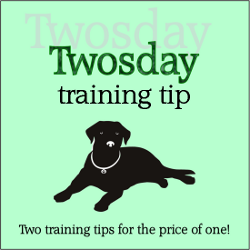 TIP #1: GETTING COMFY WITH THE CRATE A crate, or, in other words, short-term close confinement, can be used to help dogs teach themselves two very important skills. The first is eliminating only when and where it is appropriate. The second skill is keeping out of trouble - behaving appropriately in the house. Without these two skills, a dog doesn't have much of a chance in this world. To get your dog to go into the crate, start with the crate door open, and toss some irresistibly yummy treats inside. If he is hesitant to go in after them, toss the treats close enough to the doorway that he can stand outside and just poke his nose in the crate to eat them. If you are training with a clicker or other reward marker, each time he sticks is head in, Click! the clicker (or say "Yes!" if you are using a verbal marker). Gradually toss the treats farther and farther into the crate until he steps inside to get them. Continue to Click! each time he steps in. When he enters the crate easily to get the treats, Click! and offer him a treat while he is still inside. If he is willing to stay inside, keep clicking and treating. If he comes out that's okay too, just toss another treat inside and wait for him to re-enter. Don't try to force him to stay in the crate. When he enters the crate to get the treat without hesitation, you can start using a verbal cue such as "Go to bed" as he goes in, so that you will eventually be able to send him into his crate on just a verbal cue. When your dog will stay in the crate with the door closed for at least 10 seconds without any signs of anxiety, close the door, latch it, and take one step away from the crate. Click!, return to the crate, reward, and open the door. Repeat this step, varying the time and distance you leave the crate. - Whole Dog Journal TIP #2: PLAY NICE! Owners often have difficulty distinguishing between appropriate and inappropriate play. Some may think that perfectly acceptable play behavior is bullying because it involves growling, biting, and apparently pinning the playmate to the ground. Appropriate play can, in fact, look and sound quite ferocious. The difference is in the response of the playmate. If both dogs appear to be having a good time and no one's getting hurt, it's usually fine to allow the play to continue. Thwarting your dog's need to play by stopping him every time he engages another dog, even if it's rough play, can lead to other behavior problems. With a bully, the playmate clearly does not enjoy the interaction. The softer dog may offer multiple appeasement and deference signals that are largely or totally ignored by the canine bully. The harassment continues, or escalates. Any time one play partner is obviously not having a good time, it's wise to intervene. A traumatic play experience can damage the softer dog’s confidence and potentially induce a life-long fear aggression or "Reactive Rover" response - definitely not a good thing! Some bullies seem to spring from the box full blown, meaning there could be a genetic element behind this type of personality. However, there can certainly be a learned component of any bullying behavior. As Jean Donaldson reminds us, the act of harassing a "non-consenting dog" is in and of itself reinforcing for bullies. By definition, a behavior that's reinforced continues or increases - hence the importance of intervening with a bully at the earliest possible moment, rather than letting the behavior become more and more ingrained through reinforcement. As with most behavior modification, prognosis is brightest if the dog is young, if he hasn't had much chance to practice the unwanted behavior, and if he has not been repeatedly successful at it. - Whole Dog Journal 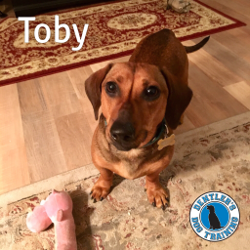 Toby loves to play, so we used that to our advantage to teach him how to Come When Called. By playing fun recall games like Puppy Ping Pong and Runaway Recall he learned that coming to us is awesome! 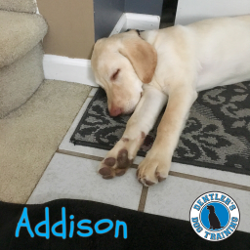 Socialization is the developmental process of familiarizing a puppy with her constantly changing surroundings. It's how they work out what is safe and good as opposed to what is dangerous and not-so-good. Sometimes the best way for puppies to learn is just by observing. Yes, Addison was happy to meet new people, but she was equally content to just sit and calmly watch and learn. 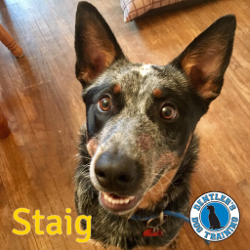 Being a young, high-energy Australian Cattle Dog, staying in place is not something that comes easy to Staig. But with patience and perseverance he was able to hold a stay while we disappeared from sight for a period of time. He did really well. 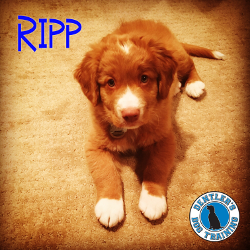 Today's rain didn't dampen Ripp's enthusiasm to play puppy ping pong, rocket recall, and hide and seek. By playing these fun games Ripp learned that coming to us makes the most wonderful things happen to him! 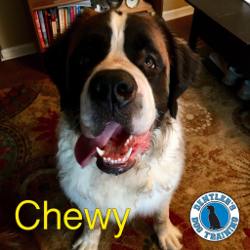 Chewy already sits well, so tonight we taught him Down. Because of his size I didn't want him to do too many repetitions but, luckily, he learned it very quickly and he didn't have to. We then had time to teach him Stay, which he did even when somebody left the room and rustled his food bag! 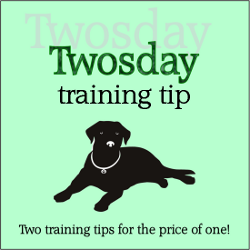 TIP #1: LEAVE IT ALONE Impulse control requires patience, and Leave It (sometimes called "Off") is a very powerful impulse control exercise. It involves having the dog turn away from something that he is interested in and make eye contact with you instead. An excellent way to jump-start this behavior is through a "Doggy Zen" exercise. (Doggy Zen: In order to have the treat, you must leave the treat.) 1. Have a handful of super-exciting treats and one rather boring treat available. Put the boring treat in one hand and the good treats in a pouch or container behind your back. Present the boring treat to your dog in a closed fist (so she can smell it, but can't get to it). Allow your dog to lick and sniff your hand, and try to get to the treat. 2. The moment your dog backs away from your treat/hand a tiny bit, mark the moment with a click or a "Yes!" and give your dog one of the super-good treats from your other hand. Be very patient; the first try or two can take several minutes before a dog gives up and backs away. 3. Once your dog understands the game and quickly backs away from the treat in your fist, change it up a little by switching which hand is holding the boring treat. Again, reward with the yummy treat from your other hand. 4. Once your dog easily backs away from a boring treat in either hand, pause a moment after your dog backs away from the treat (without immediately marking or rewarding the behavior). Watch your dog carefully; almost always, after a few moments of not getting the expected reward, dogs will look at your face for information, trying to figure out why they haven't been rewarded yet. The moment he offers that eye contact, click (or "Yes!") and reward him. 5. When your dog easily backs off a treat and subsequently makes eye contact with you each time, add a verbal cue such as "Leave it." Present the treat first, and when your dog takes notice, say "Leave it," and click/"Yes!" and reward when your dog makes eye contact. 6. Practice "Leave it" while placing the treat on the floor. Make sure you can cover it quickly with your foot if your dog makes a move for it! 7. Take the cue on the road, and practice with different items such as a favorite toy, or a distraction like an interesting smell or the sight of another dog. - Whole Dog Journal TIP #2: NUTRITION AND STRESS - WHAT'S THE CONNECTION? You're probably wondering what on earth your dog's diet has to do with his stress levels when left alone. The answer is, plenty. Have you ever drank one cup of coffee too many and gotten that jittery, wired feeling? You might have snapped at your co-workers, been more impatient than usual when waiting in line, or reacted with vitriol when someone cut you off in traffic. Likewise, have you noticed the way kids act when they've eaten too much sugar? They can become cranky and hyperactive. What we ingest has a direct effect on our nervous system. A long-term diet of sweets and processed foods will surely impact our health, but it may also cause us to feel less emotionally balanced, and even depressed, anxious, or angry. By the same token, eating a healthful diet contributes to a state of well being both physically and emotionally. It's no different for dogs. Dog food that is built on inferior protein sources and laden with unhealthy chemicals, preservatives, and excess sugars can contribute to issues such as hyperactivity, restlessness and nervousness. A healthful diet will go a long way toward allowing your dog to feel physically calmer, which will set the stage for a tranquil emotional state. Making wise nutritional choices will also result in better overall health for your dog, which will be especially beneficial as he ages. - excerpted from Don't Leave Me! |
AuthorJeff Dentler, CPDT-KA, IAABC-ADT, FFCP, CTDI Archives
July 2024
Categories |

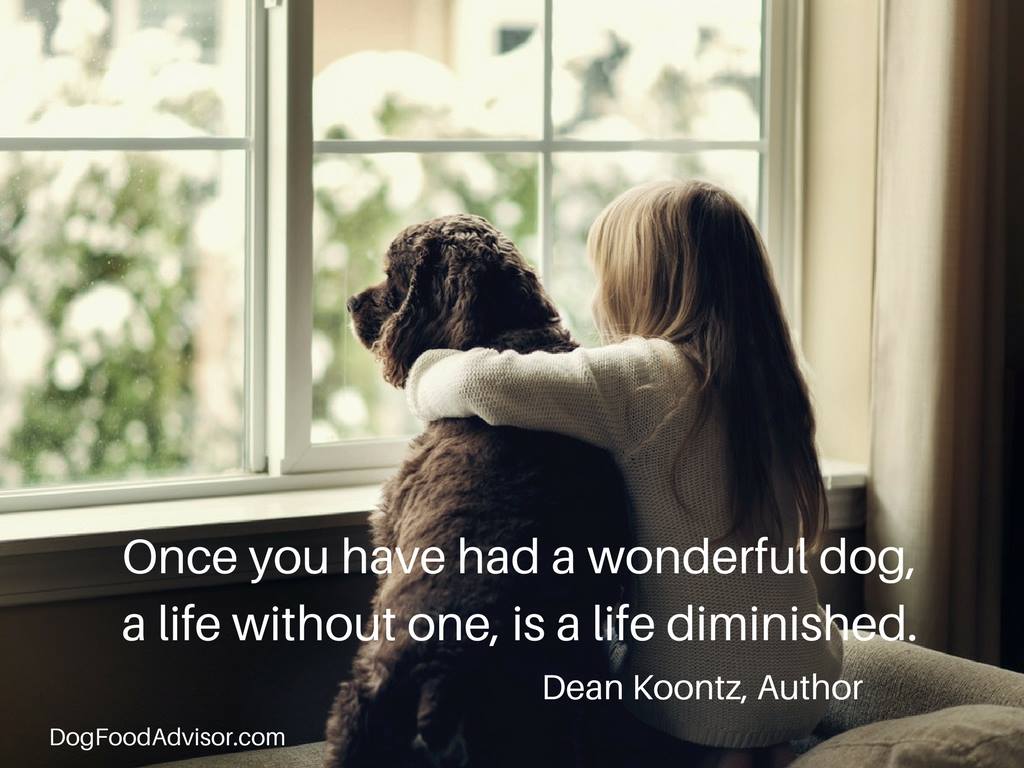
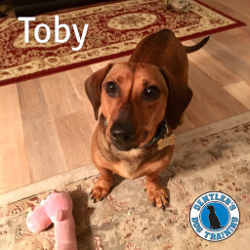
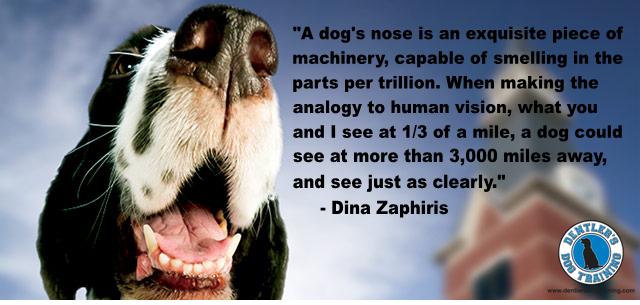
 RSS Feed
RSS Feed